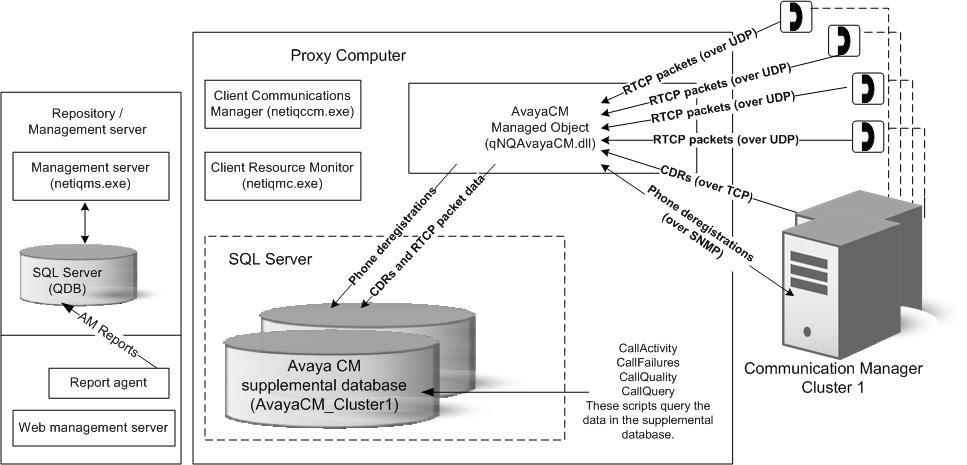2.2 Proxy Architecture and Deployment
With AppManager support for Avaya Communication Manager, the agent does not need to be installed on every device you want to monitor. With this proxy architecture, the module is installed on a proxy agent computer. When you run a Knowledge Script job, the managed object runs on the proxy computer and uses SNMP to send messages to and from Communication Manager.
Unlike other AppManager modules, AppManager for Avaya Communication Manager supports only one AppManager repository (QDB) per proxy computer. This limitation ensures the accuracy of monitoring phones with the PhoneQuality script. The list of phones available for monitoring with the PhoneQuality script does not differentiate between repositories; if multiple repositories were allowed, you could very well monitor the wrong set of phones for a given repository.
The following diagram illustrates the flow of data between the components of AppManager for Avaya Communication Manager:

Avaya Communication Manager uses TCP to send call detail records (CDRs) to the managed object. Phones registered to Communication Manager use RTCP to send call packets to the managed object. The managed object sends the CDRs and RTCP packets to the Avaya CM supplemental database while the CallActivity, CallFailures, and CallQuality Knowledge Scripts are running. The managed object uses SNMP queries to ask Communication Manager which phones are registered, and then sends deregistration information to the supplemental database while the PhoneDeregistration Knowledge Script is running.
The Knowledge Scripts monitor and raise events for the data in the supplemental database according to the parameters you set in the scripts. For more information, see SetupSupplementalDB.